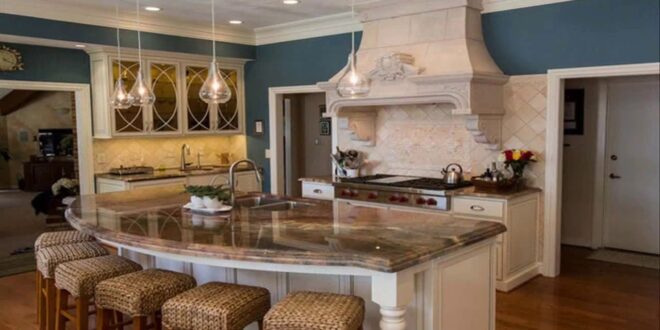The Allure of the Curve: Why Choose a Curved Kitchen Island?
In the realm of kitchen design, where straight lines and sharp angles have long reigned supreme, a new contender has emerged, gracefully challenging the status quo: the curved kitchen island. More than just a trend, the curved kitchen island represents a shift towards softer aesthetics, improved functionality, and a more inviting atmosphere in the heart of the home. But why are homeowners and designers increasingly drawn to these elegant, flowing forms? Let’s delve into the compelling reasons behind the curve’s growing popularity.
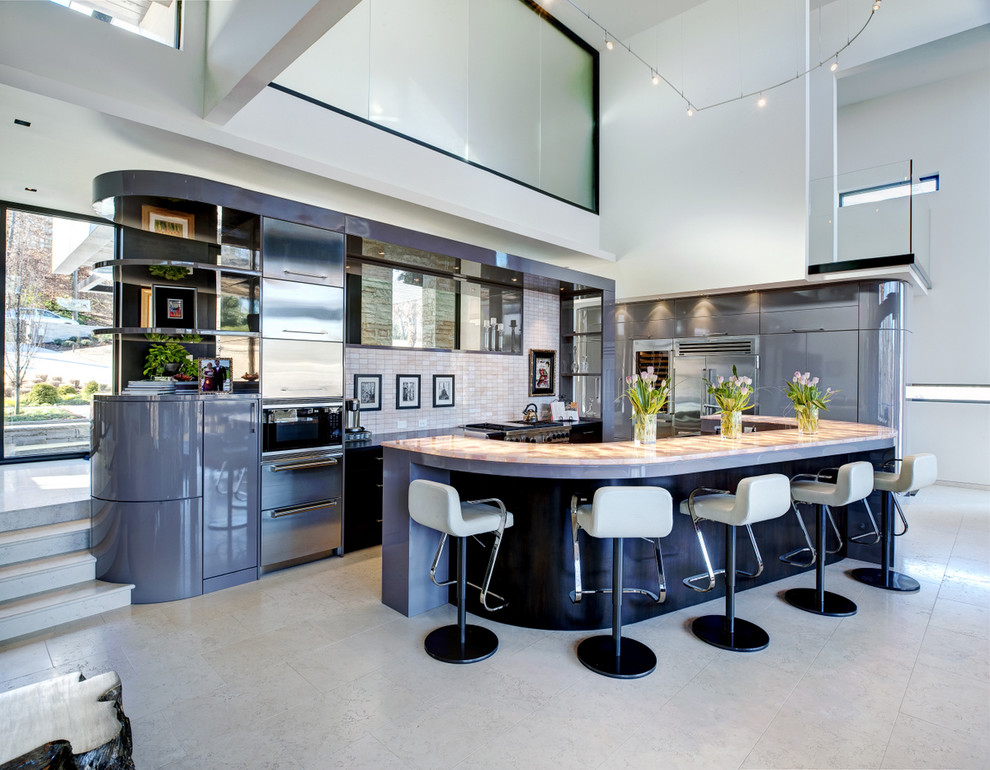
Breaking Free from the Grid: Aesthetics and Visual Appeal
The most immediate and striking benefit of a curved kitchen island is its visual impact. In a space often dominated by rectangular cabinets, countertops, and appliances, a curve offers a welcome respite, a gentle counterpoint to the prevailing angularity. This organic shape can soften the overall look of the kitchen, creating a more relaxed and welcoming ambiance. It introduces an element of surprise and sophistication, elevating the design from ordinary to extraordinary. Imagine stepping into a kitchen where the island’s graceful curve invites you in, rather than presenting a rigid, unyielding barrier. The difference is palpable.
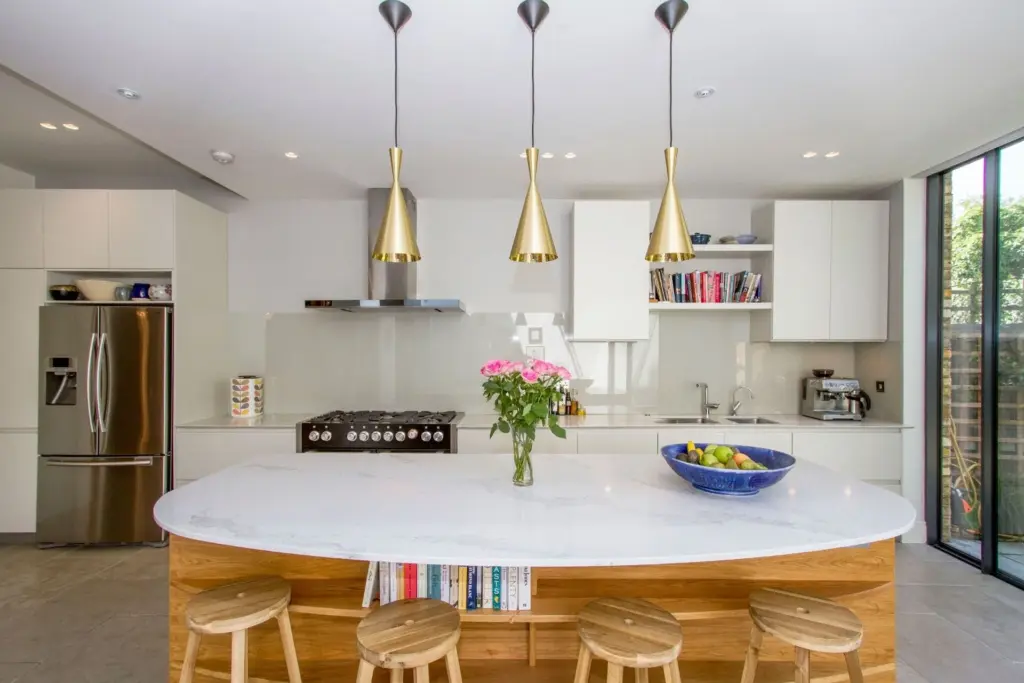
Furthermore, curved islands can be particularly effective in larger kitchens, where a rectangular island might feel too imposing or blocky. The curve helps to break up the visual mass, creating a more airy and spacious feel. It allows for better traffic flow around the island, preventing bottlenecks and making the kitchen a more user-friendly space.
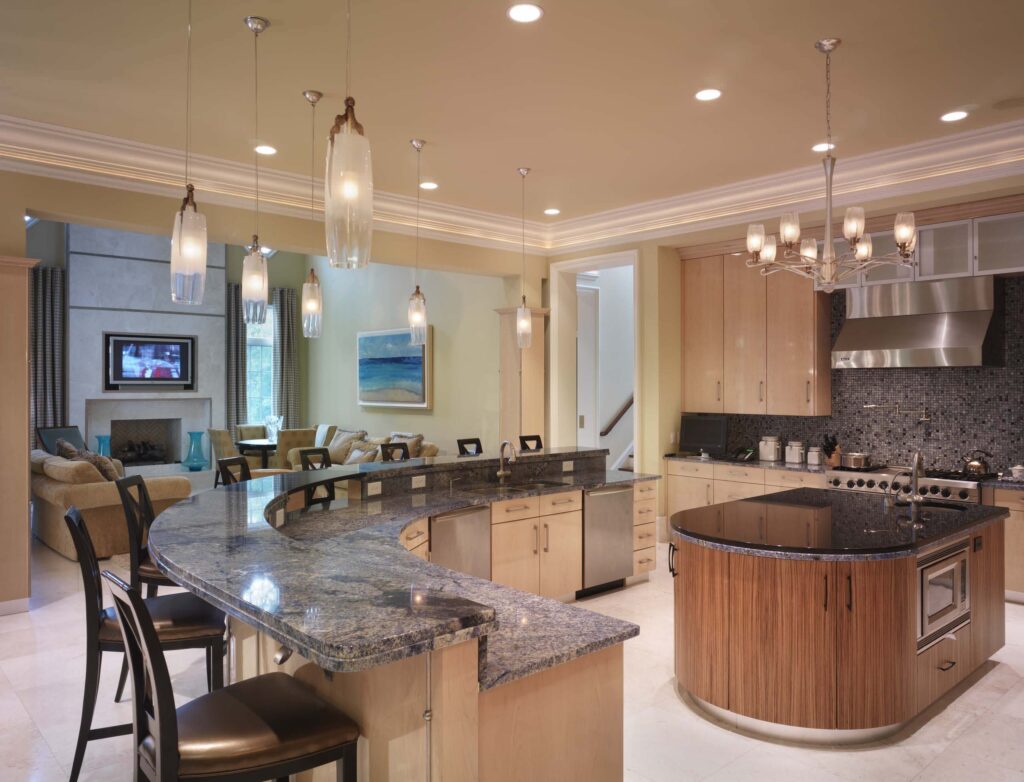
Enhanced Functionality and Ergonomics: A More Practical Approach
Beyond aesthetics, curved kitchen islands offer tangible functional benefits. The rounded edges eliminate sharp corners, making them safer, especially for families with young children. No more accidental bumps and bruises! This subtle safety feature is a significant advantage, particularly in a busy kitchen environment.
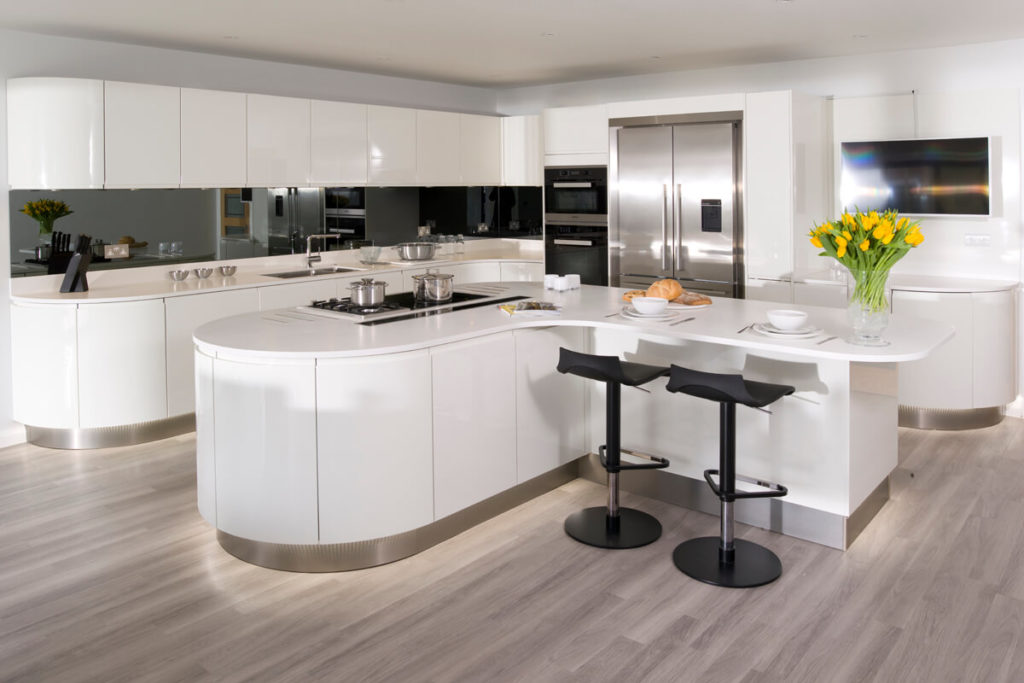
The curved design can also improve the ergonomics of the kitchen. A curved island allows for a more natural and comfortable workflow. For example, a curved breakfast bar provides more seating and allows people to face each other, fostering conversation and connection. The shape encourages a more social and interactive experience, making the kitchen a gathering place for family and friends. Instead of a straight line of stools, a curve allows for better eye contact and a more intimate dining experience. Consider also the cook who wants to easily grab ingredients from all sides of the island – the curve makes this easier.
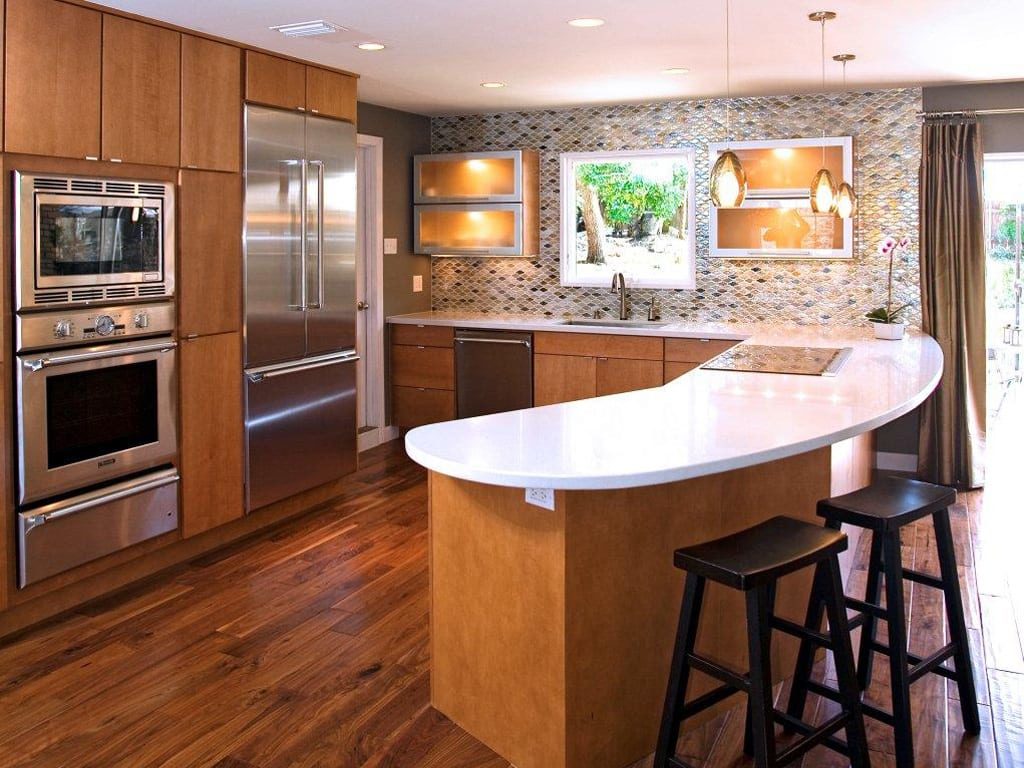
Maximizing Space and Flow: Creating a Seamless Kitchen Experience
Curved islands can be surprisingly space-efficient, especially in kitchens with awkward angles or limited square footage. The curve can be designed to hug the contours of the room, maximizing the available space and creating a more seamless flow. This is particularly useful in kitchens where a traditional rectangular island would feel cramped or obstructive.
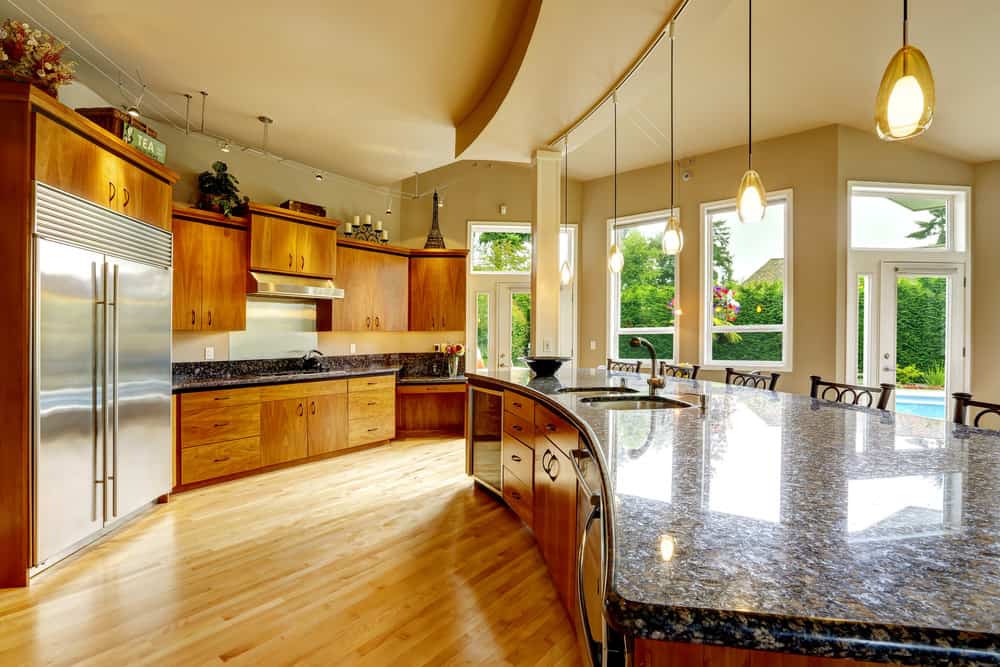
Moreover, a curved island can help to define different zones within the kitchen. It can separate the cooking area from the dining area, or create a distinct space for food preparation, socializing, or homework. This zoning effect can make the kitchen feel more organized and functional, improving its overall usability. Imagine having a dedicated baking zone on one side of the curve and a casual dining area on the other – a clever way to optimize space and functionality.
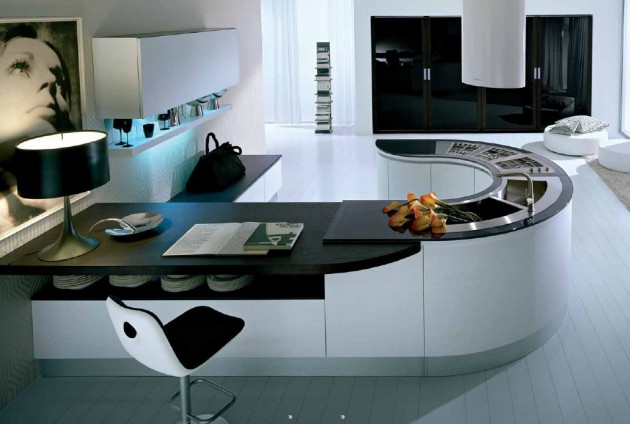
Exploring Different Curved Kitchen Island Designs: Inspiration and Ideas
The beauty of curved kitchen islands lies in their versatility. They can be adapted to suit a wide range of styles, sizes, and layouts. From sleek and modern to rustic and traditional, there’s a curved island design to complement every kitchen aesthetic. Let’s explore some inspiring examples:
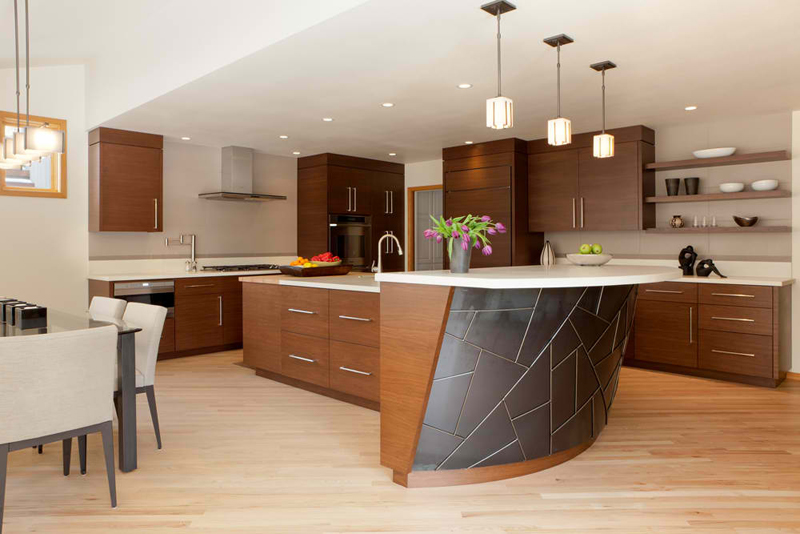
The Gentle Arc: A Subtle Touch of Elegance
The gentle arc is the most common and versatile type of curved island. It features a soft, sweeping curve that adds a touch of elegance without being too dramatic. This design works well in both large and small kitchens and can be easily incorporated into a variety of styles. It’s a safe bet for those who want to experiment with curves without making a bold statement. You might consider this option if you’re new to the idea of curved islands and want something subtle and sophisticated.
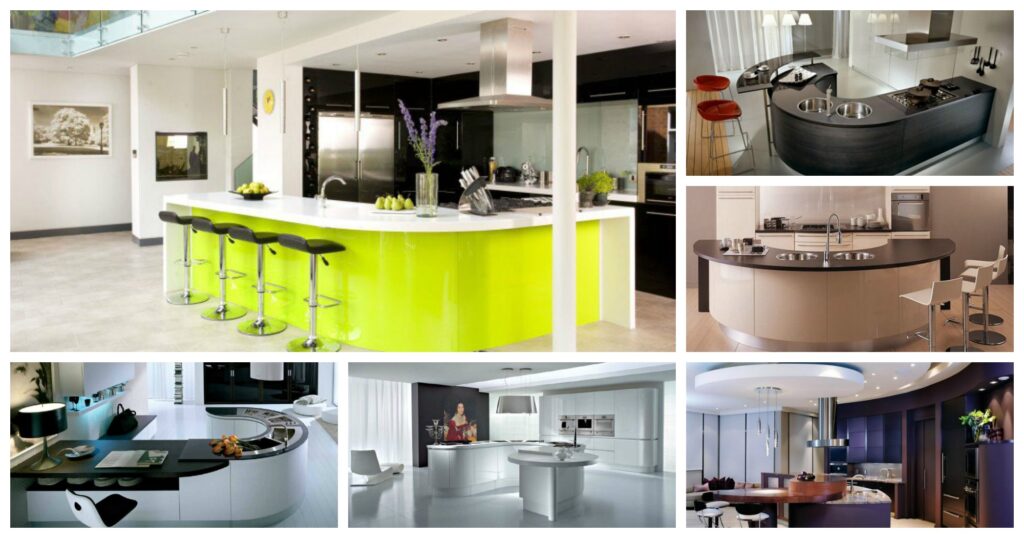
Consider using this design with a contrasting countertop material to further emphasize the curve. For example, a dark granite countertop on a light-colored island will accentuate the shape and create a striking visual effect.
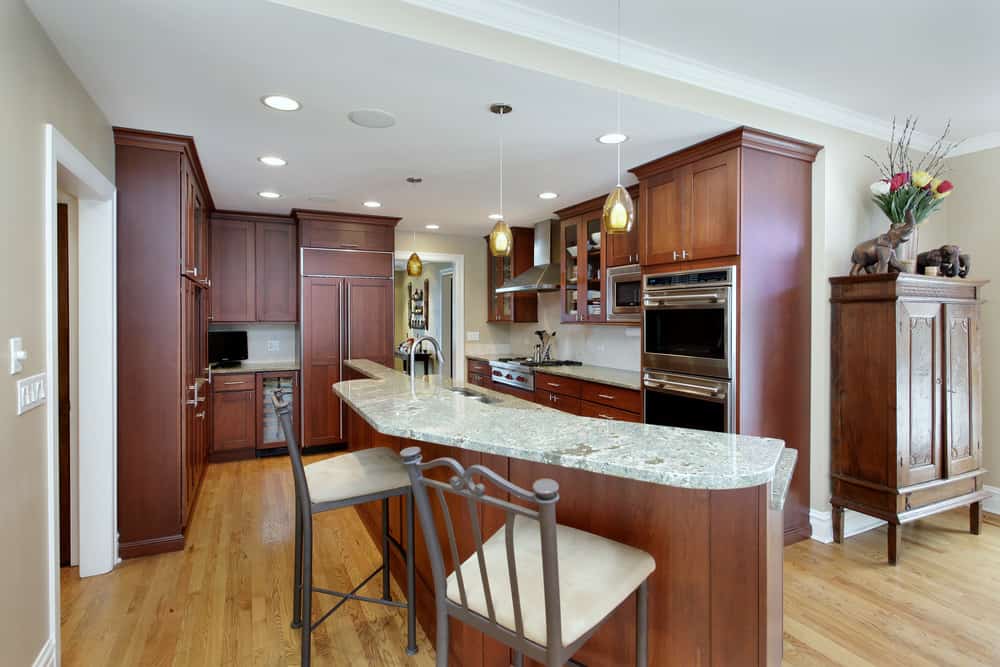
The S-Curve: A Statement of Sophistication
For those who want to make a bolder statement, the S-curve is an excellent choice. This design features a double curve, creating a more dynamic and visually interesting shape. It’s perfect for larger kitchens where you want to create a focal point. The S-curve island commands attention and adds a touch of drama to the space. Think of it as a piece of art in your kitchen.
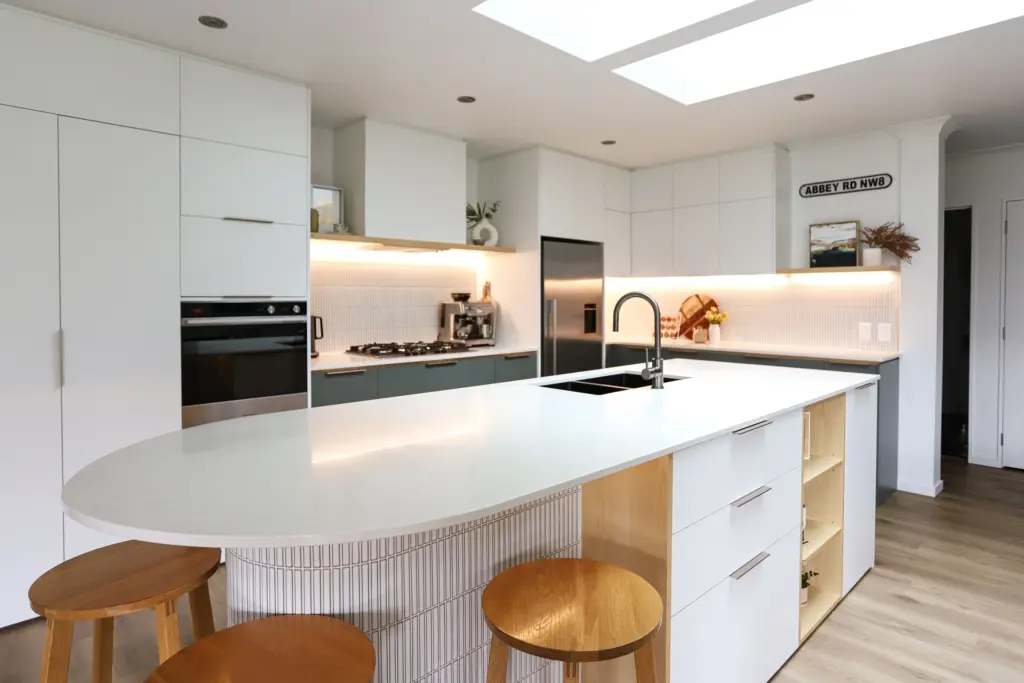
This design often incorporates two distinct zones: one for food preparation and another for seating. The curves naturally separate these areas, creating a functional and aesthetically pleasing space.

The Circular Island: A Modern Masterpiece
The circular island is a daring and contemporary design that’s sure to impress. This design is best suited for large, open-plan kitchens where it can truly shine. The circular shape creates a sense of flow and unity, making the kitchen feel like a cohesive and inviting space. It’s a bold choice that requires careful planning and execution, but the results can be truly stunning.
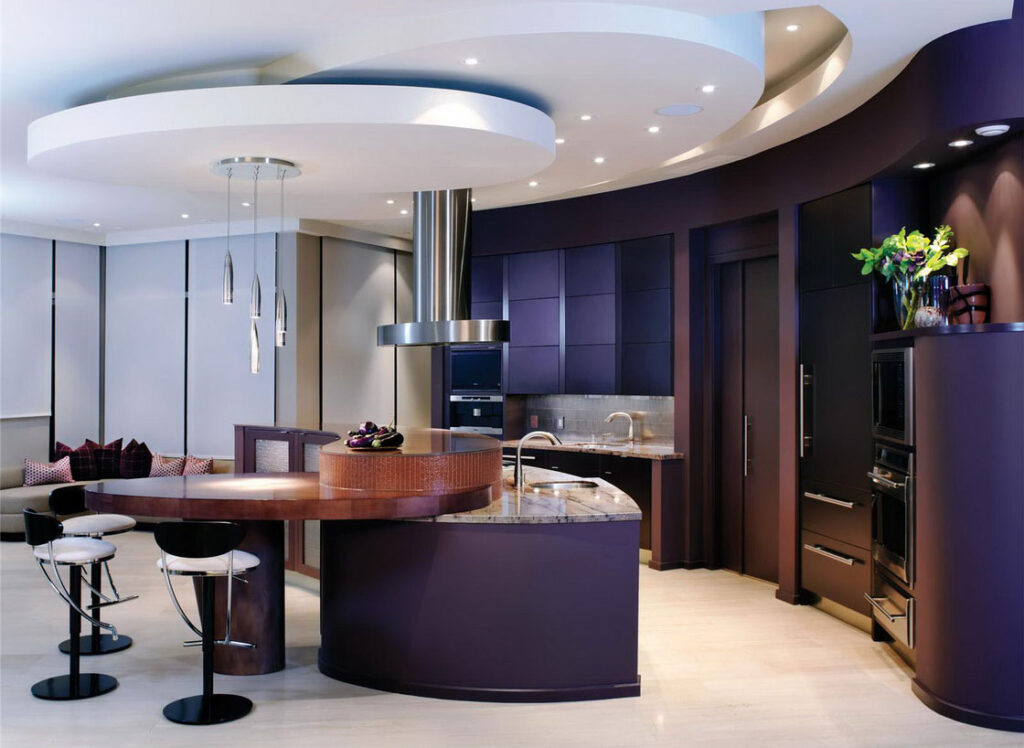
Consider incorporating a central feature within the circle, such as a cooktop, a prep sink, or even a small indoor herb garden. This will add functionality and visual interest to the island.
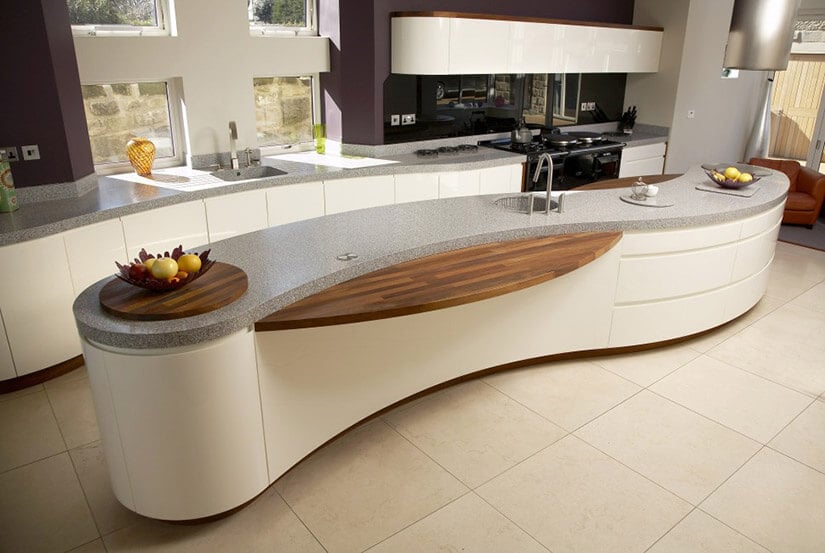
The Kidney-Shaped Island: Practicality Meets Style
The kidney-shaped island offers a unique combination of practicality and style. This design is particularly well-suited for smaller kitchens where space is at a premium. The kidney shape allows for ample countertop space while also providing comfortable seating. It’s a clever way to maximize functionality without sacrificing aesthetics.
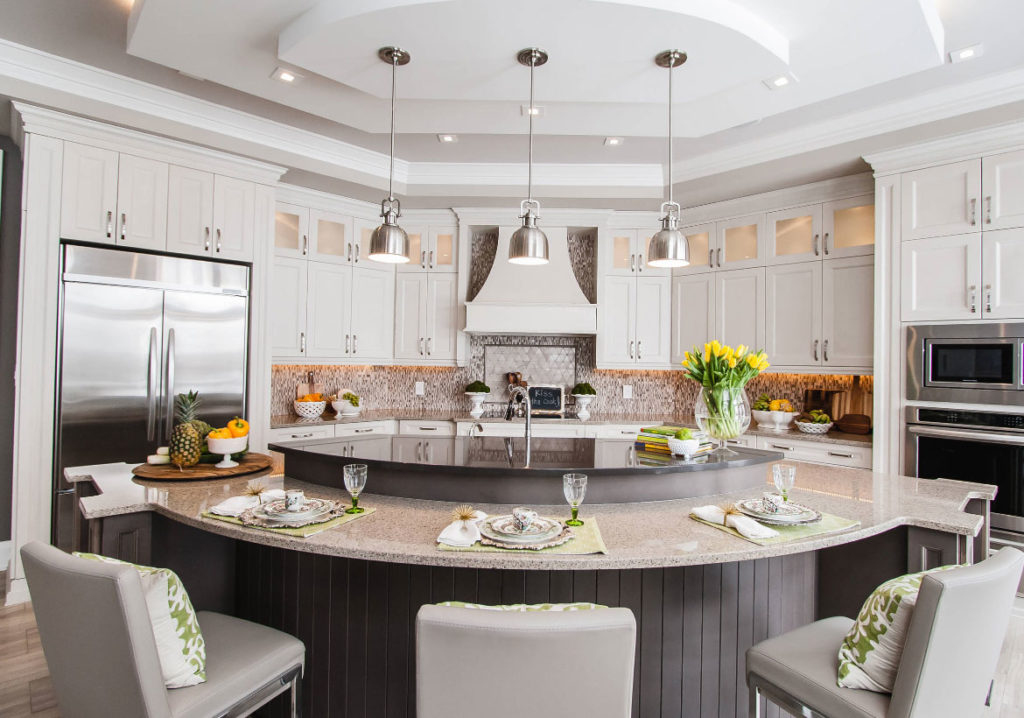
This design is often used to create a breakfast bar or a casual dining area. The curve of the island allows for better interaction between the cook and the diners, fostering a more social and engaging experience.
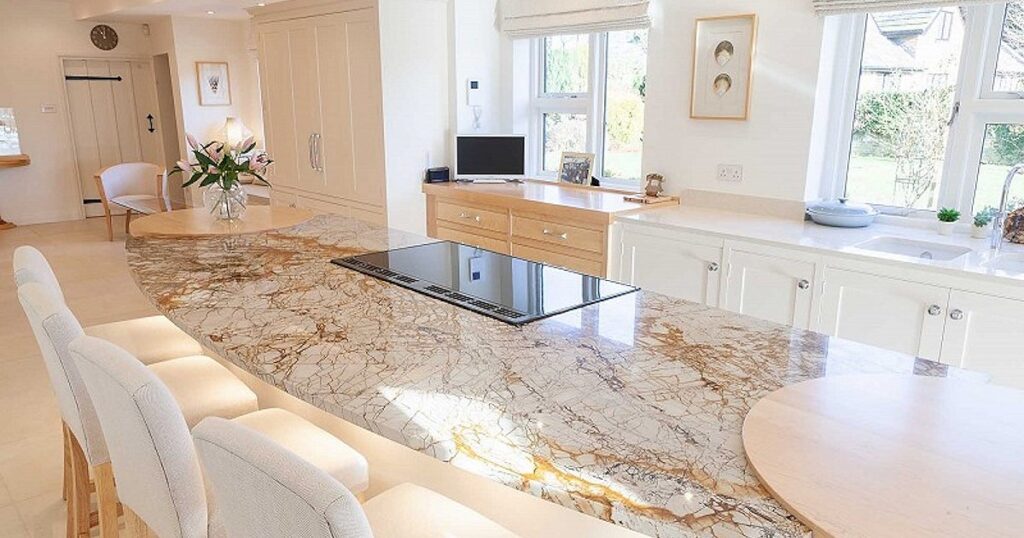
The Freeform Island: Unleashing Creativity
For the truly adventurous, the freeform island offers the ultimate in design flexibility. This design allows you to create a custom shape that perfectly suits your kitchen’s unique layout and your personal style. The possibilities are endless! It’s an opportunity to truly express your creativity and create a one-of-a-kind kitchen. But be warned: This is best left to experienced designers.
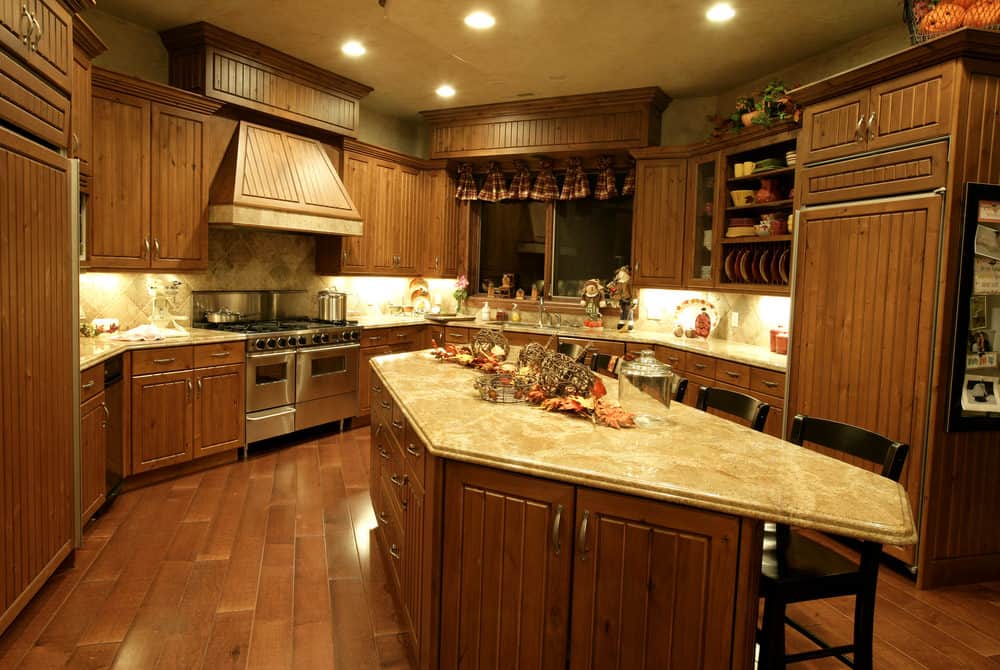
When designing a freeform island, consider the ergonomics of the space and the flow of traffic. The shape should be both visually appealing and functionally efficient.
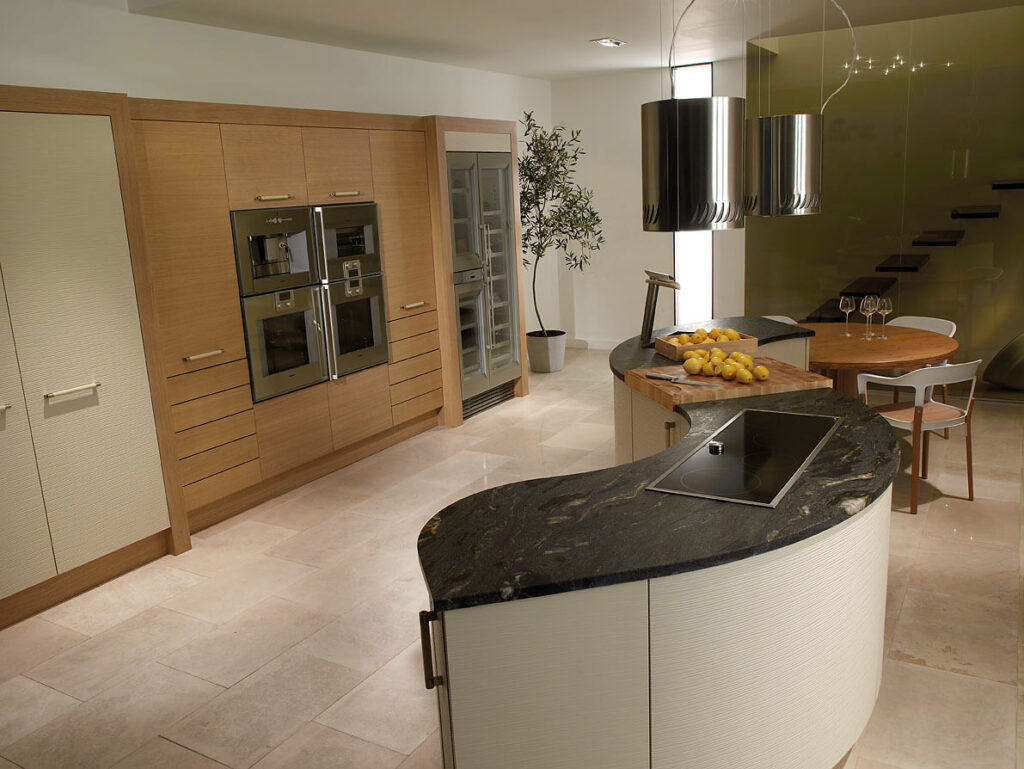
Materials and Finishes: Bringing Your Curved Kitchen Island to Life
The choice of materials and finishes plays a crucial role in the overall look and feel of your curved kitchen island. From the countertop to the cabinetry, every element should be carefully considered to create a cohesive and harmonious design. Here are some popular options:
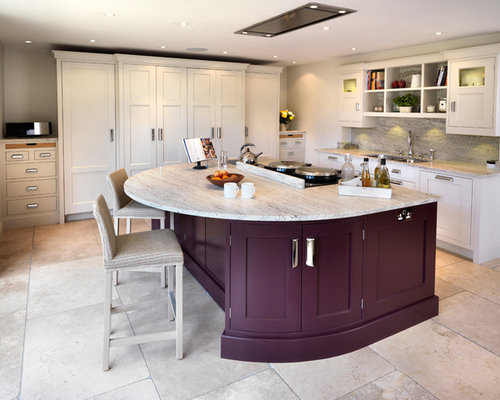
Countertops: A Foundation of Style and Durability
The countertop is the most visible and heavily used surface of the island, so it’s important to choose a material that is both beautiful and durable. Some popular options include:
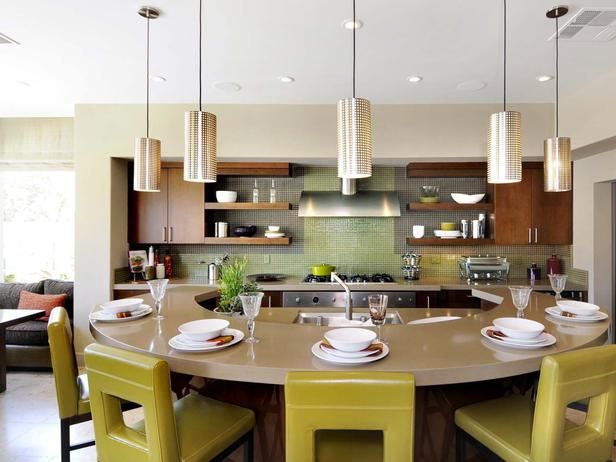
- Granite: A classic choice that offers timeless elegance and exceptional durability. Granite is heat-resistant, scratch-resistant, and stain-resistant, making it ideal for a busy kitchen.
- Quartz: An engineered stone that offers a wide range of colors and patterns. Quartz is non-porous, making it resistant to stains and bacteria. It’s also relatively low-maintenance.
- Marble: A luxurious material that adds a touch of sophistication to any kitchen. Marble is known for its beautiful veining and its cool, smooth surface. However, it’s also relatively soft and porous, so it requires more care and maintenance than granite or quartz.
- Wood: A warm and inviting material that adds a rustic touch to the kitchen. Wood countertops can be made from a variety of species, each with its own unique color and grain pattern. However, wood is susceptible to scratches, dents, and water damage, so it requires regular sealing and maintenance.
- Concrete: A modern and industrial material that adds a unique textural element to the kitchen. Concrete countertops can be custom-cast to any shape or size, making them ideal for curved islands. However, concrete is porous and can stain easily, so it requires regular sealing and maintenance.
Cabinetry: The Backbone of Your Island’s Design
The cabinetry is the foundation of your island’s design, so it’s important to choose a style and finish that complements your overall kitchen aesthetic. Some popular options include:
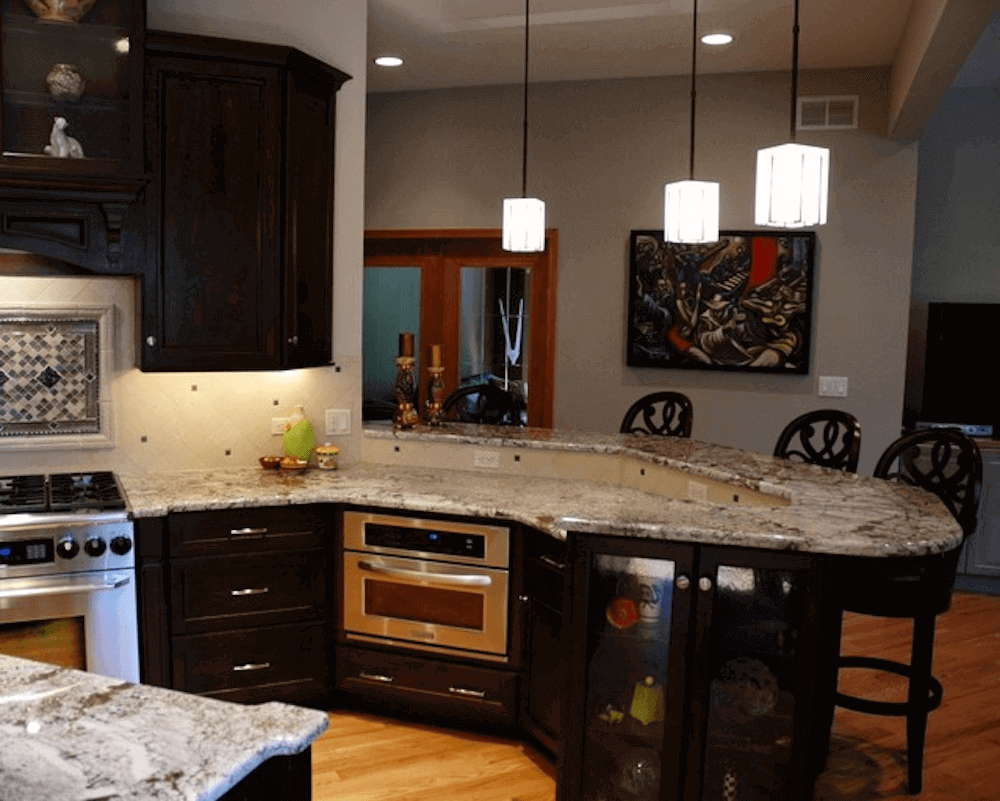
- Painted Cabinets: A versatile choice that offers a wide range of colors and finishes. Painted cabinets can be easily customized to match your kitchen’s décor.
- Wood Cabinets: A classic choice that adds warmth and character to the kitchen. Wood cabinets can be stained or painted to achieve a variety of looks.
- Laminate Cabinets: A budget-friendly option that offers a wide range of colors and patterns. Laminate cabinets are durable and easy to clean.
- Metal Cabinets: A modern and industrial choice that adds a sleek and sophisticated touch to the kitchen. Metal cabinets are durable and easy to maintain.
Finishes: Adding the Final Touches
The finishes on your curved kitchen island can make a big difference in its overall look and feel. Consider the following:
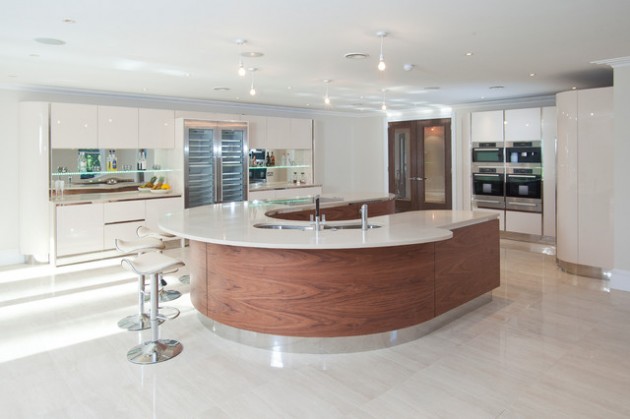
- Hardware: Choose knobs and pulls that complement the style of your cabinetry.
- Lighting: Install pendant lights or recessed lighting to illuminate the island and create a warm and inviting atmosphere.
- Backsplash: Add a backsplash to protect the wall behind the island and add a touch of visual interest.
- Seating: Choose bar stools or counter stools that are comfortable and stylish.
Planning Your Curved Kitchen Island: A Step-by-Step Guide
Designing and installing a curved kitchen island requires careful planning and attention to detail. Here’s a step-by-step guide to help you through the process:
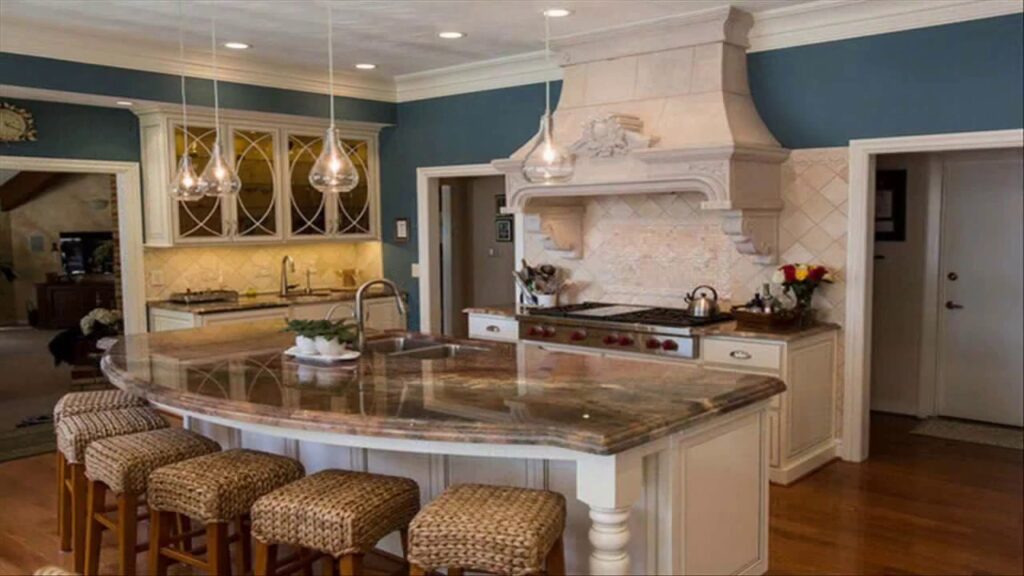
- Define Your Needs and Goals: What do you want to use the island for? Cooking, food preparation, dining, socializing? How much storage do you need?
- Measure Your Space: Accurately measure your kitchen’s dimensions to ensure that the island will fit comfortably. Consider traffic flow and clearances.
- Choose a Design: Select a curved island design that complements your kitchen’s style and meets your functional needs.
- Select Materials and Finishes: Choose countertops, cabinetry, and finishes that are both beautiful and durable.
- Create a Budget: Determine how much you’re willing to spend on the island.
- Hire a Professional: Consult with a kitchen designer or contractor to help you plan and install the island. This is crucial for complex curved designs.
- Obtain Permits: Check with your local building department to see if you need any permits for the project.
- Install the Island: The installation process will vary depending on the complexity of the design.
- Enjoy Your New Island! Once the island is installed, you can start enjoying its beauty and functionality.
The Future is Curved: Embracing the Trend
Curved kitchen island designs are more than just a passing fad; they represent a fundamental shift in the way we think about kitchen design. They offer a unique combination of style, functionality, and ergonomics that makes them an increasingly popular choice for homeowners and designers alike. As kitchens evolve into more than just cooking spaces – becoming centers for gathering, working, and relaxing – the curved island’s ability to create a welcoming and efficient environment will only become more valuable. The move away from strictly angular designs is well underway, and the curved kitchen island is leading the charge.
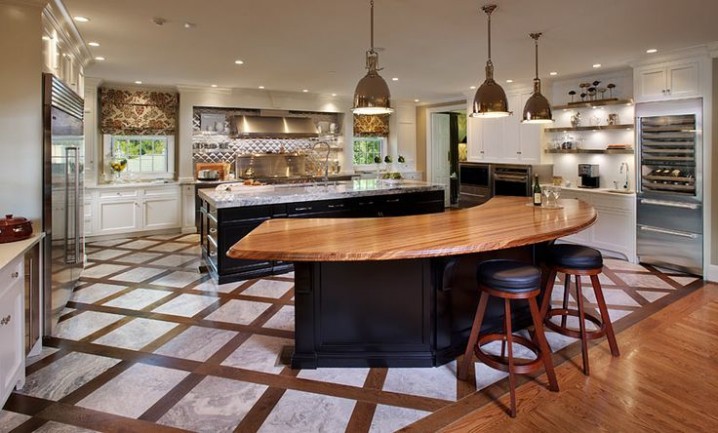
So, if you’re looking to add a touch of elegance, sophistication, and functionality to your kitchen, consider the allure of the curve. It might just be the perfect solution for creating the kitchen of your dreams. Embrace the future of kitchen design, and let the curve lead the way!
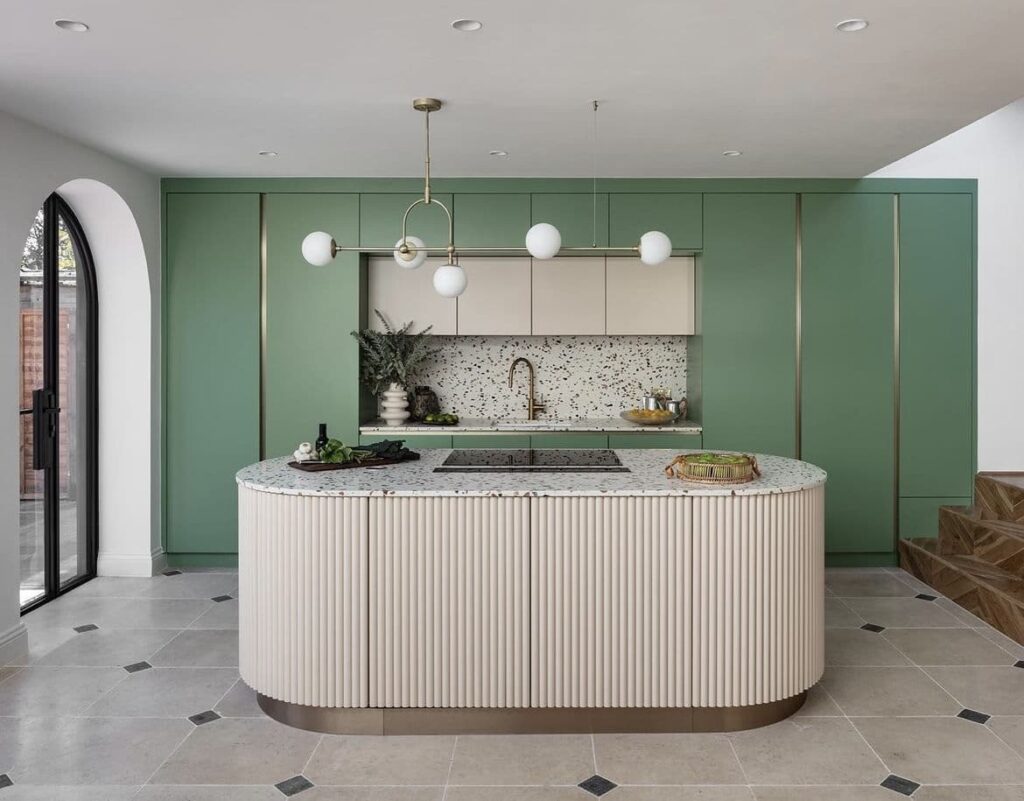
 Nimila
Nimila
